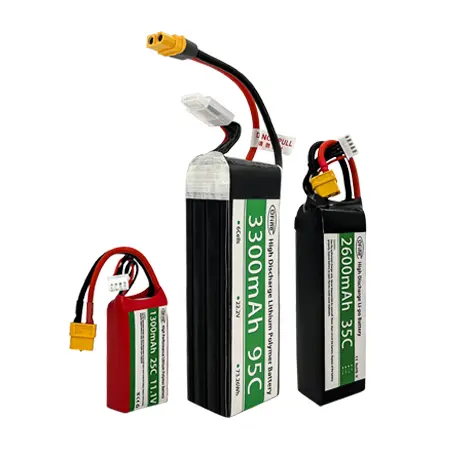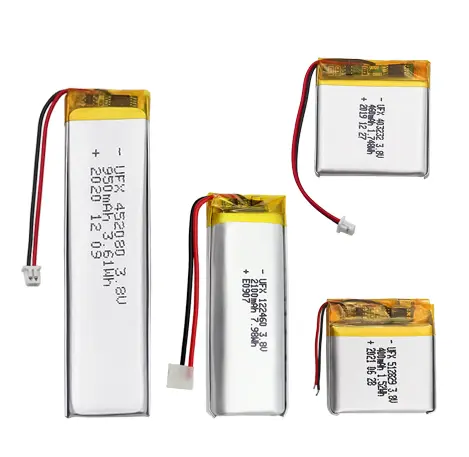In the world of First-Person View (FPV) drones, a crucial component that determines the performance and flight time is the FPV battery. Whether you’re an experienced pilot or a beginner in the FPV hobby, understanding the ins and outs of FPV batteries is essential for optimizing your drone’s performance. This comprehensive guide will explore the definition, types, charging methods, tips for choosing the correct battery, and safety precautions when using FPV batteries.
Part 1. What is an FPV battery?
An FPV battery is a rechargeable power source designed explicitly for FPV drones. These batteries provide the necessary electric current to drive the motors and power the entire drone system. FPV batteries come in various shapes, sizes, and configurations. Still, they all share the purpose of delivering power to the drone during flight.
The two main factors to consider when discussing FPV batteries are voltage (V) and capacity (mAh). Voltage represents the electrical potential difference the battery provides, while capacity denotes the battery’s energy storage capacity. Higher voltage batteries generally offer more power, increasing performance and speed, while higher capacity batteries offer extended flight times.
Part 2. Types of FPV battery
FPV enthusiasts commonly use two primary types of batteries: Lithium polymer (LiPo) batteries and lithium-ion (Li-Ion) batteries.
Lithium Polymer (LiPo) Batteries
LiPo batteries are the most popular choice for FPV drones due to their high energy density and ability to deliver high currents. These lightweight batteries offer excellent power-to-weight ratios, making them ideal for agility and maneuverability in FPV racing and freestyle flying. LiPo batteries are available in different cell configurations, denoted by “S” (series) and “C” (capacity). For example, a 4S 1500mAh LiPo battery has four cells in series and a capacity of 1500mAh.
Lithium-Ion (Li-Ion) Batteries
Li-Ion batteries, commonly found in consumer electronics, are an alternative option for FPV drones. They have a higher energy density than LiPo batteries, translating to longer flight times. However, Li-Ion batteries are generally heavier and bulkier than LiPo batteries, making them less suitable for racing and acrobatic maneuvers. They offer a better suitability for aerial photography and cinematic flights, prioritizing longer flight times over agility.
LiPo vs Li-ion battery, which is better for FPV
LiPo batteries have become the go-to choice for many FPV enthusiasts due to their lightweight design and high power output. They offer a remarkable combination of power and agility, making them ideal for racing and acrobatic maneuvers. On the other hand, Li-ion batteries provide extended flight times, making them suitable for aerial photography and long-distance exploration. The choice between LiPo and Li-ion batteries ultimately depends on your specific FPV needs and preferences.
Part 3. How to charge an FPV battery?
- Select a suitable charger: Invest in a quality balance charger specifically designed for LiPo or Li-Ion batteries. These chargers ensure balanced charging across all cells and offer safety features to prevent overcharging or undercharging.
- Prepare the charging area: Charge your FPV batteries on a fireproof surface away from flammable materials. A LiPo charging bag or a fireproof container should contain potential fire hazards.
- Connect the battery: Connect the battery to the charger using the appropriate balance lead and charging cables. Ensure the polarity is correct to avoid any damage or accidents.
- Set charging parameters: Consult the battery manufacturer’s specifications for the recommended charging parameters. Input the correct cell count (S), capacity (mAh), and charging current (C) into the charger. Charging at the appropriate current helps maintain the battery’s health and extends its lifespan.
- Monitor the charging process: Keep a close eye on the charging process and never leave the battery unattended. If you notice any swelling, overheating, or unusual behavior, immediately stop charging and safely dispose of the battery.
- Store the battery safely: After charging, store the FPV batteries in a cool, dry place away from direct sunlight and extreme temperatures. Storing LiPo batteries at a storage voltage (around 3.8V per cell) is essential to maintain longevity.
Part 4. How do you choose the correct FPV battery?
Selecting the correct FPV battery depends on several factors, including your drone’s specifications, flight requirements, and personal preferences. Consider the following aspects when choosing an FPV battery:
- Voltage and capacity: Determine the appropriate voltage and capacity based on your drone’s compatibility and flight objectives. Higher voltage batteries offer more power, while higher capacity batteries provide longer flight times.
- Weight and size: Consider the weight and size of the battery relative to your drone’s weight limits and overall balance. Lighter batteries are preferable for racing and acrobatics. In comparison, heavier batteries may be suitable for aerial photography or long-distance flights.
- Discharge rating: Consider the battery’s discharge rating, commonly called “C.” A higher discharge rating ensures the battery can supply the necessary current for demanding maneuvers or high-speed flights. Look for batteries with higher C ratings for enhanced performance.
- Connector type: Check the connector type on your drone and the battery. Common connector types include XT60, XT30, and JST. Ensure compatibility between the battery and your drone’s power system to avoid issues.
- Brand and reputation: Opt for batteries from reputable brands known for their quality and reliability. Ufine batteries often provide accurate specifications, better consistency in performance, and good customer support. Many lithium-ion battery distributors cooperate with us long-term; if you need it, you can contact us.
- Budget: Consider your budget and find a balance between quality and cost. While choosing the cheapest option is tempting, investing in a high-quality battery can prevent potential issues and ensure a better flying experience.
Part 5. How to use FPV batteries safely?
Safety is paramount when using FPV batteries to prevent accidents and protect yourself and your equipment. Here are some crucial safety tips:
- Battery inspection: Regularly inspect your batteries for signs of physical damage, swelling, or punctures. Damaged batteries should be disposed of properly and replaced.
- Proper storage: Store your FPV batteries in a fireproof bag or container, away from flammable materials. Avoid exposing batteries to extreme temperatures or direct sunlight.
- Balance charging: Always use a balance charger to charge each cell evenly. This prevents overcharging or undercharging, which can damage the battery or pose a safety risk.
- Avoid overcharging: Do not discharge your batteries below the manufacturer’s recommended voltage. Overcharging can damage the battery and reduce its lifespan.
- Safe handling: When handling batteries, avoid short circuits by ensuring the battery terminals do not come into contact with conductive materials. Use protective gloves if necessary.
- Dispose of old or damaged batteries: When a battery reaches the end of its lifespan or becomes damaged, dispose of it responsibly. Many local recycling centers or electronic stores offer battery recycling programs.
Part 6. Final thoughts
Mastering the ins and outs of FPV batteries is vital to unleashing the full potential of your drone and ensuring an exhilarating flying experience. By understanding the different types of batteries, charging them properly, choosing the right one for your needs, and adhering to safety precautions, you can soar through the skies with confidence and maximize your FPV adventures.
Part 7. FAQs
-
How long does it take to charge an FPV battery?
The charging time depends on various factors, such as the battery’s capacity, charger specifications, and charging mode. Typically, it can take 30 minutes to a few hours to fully charge an FPV battery. -
Can I use a LiPo charger for Li-ion batteries or vice versa?
Using a LiPo charger for Li-ion batteries is not recommended, and vice versa. LiPo and Li-ion batteries have different charging requirements, and using the wrong charger can lead to damage or safety hazards. -
What is the ideal storage voltage for FPV batteries?
For long-term storage, it is advisable to store LiPo batteries at around 3.8V per cell. This helps prolong their lifespan and maintain their health. -
How often should I replace my FPV battery?
The lifespan of an FPV battery depends on various factors such as usage, charging practices, and maintenance. Generally, FPV batteries can last anywhere from 100 to 300 charge cycles. Monitoring and replacing their performance is advisable when you notice a significant decrease in flight time or any signs of damage.
Related Tags:
More Articles

LiPo Battery Discharge Rate Guide & Calculation Tips
Understand LiPo battery discharge rates, C-ratings, and how to calculate max current. Essential guide for RC, drones, and electronics users.
High‑Capacity 3S LiPo Batteries: 5000 mAh vs. 10000 mAh
Compare 3S LiPo 5000mAh vs 10000mAh batteries by weight, power, and use. Find the best fit for your drone, RC car, or boat setup.
Top 5 Applications for Small 3S LiPo Batteries
Small 3S LiPo batteries power drones, RC gear, wearables, and robotics with high energy and low weight. Making them ideal for compact electronics projects.
Building and Charging Your Own 3S LiPo Pack: A Step‑by‑Step Guide
Learn how to build, balance, and charge a 3S LiPo battery pack safely at home with this complete DIY guide for hobbyists and beginners.
How to Choose the Right LiPo Battery Plug Type?
Discover the best LiPo battery plug types, how to choose them, and expert tips for safe usage, soldering, and maintenance.





